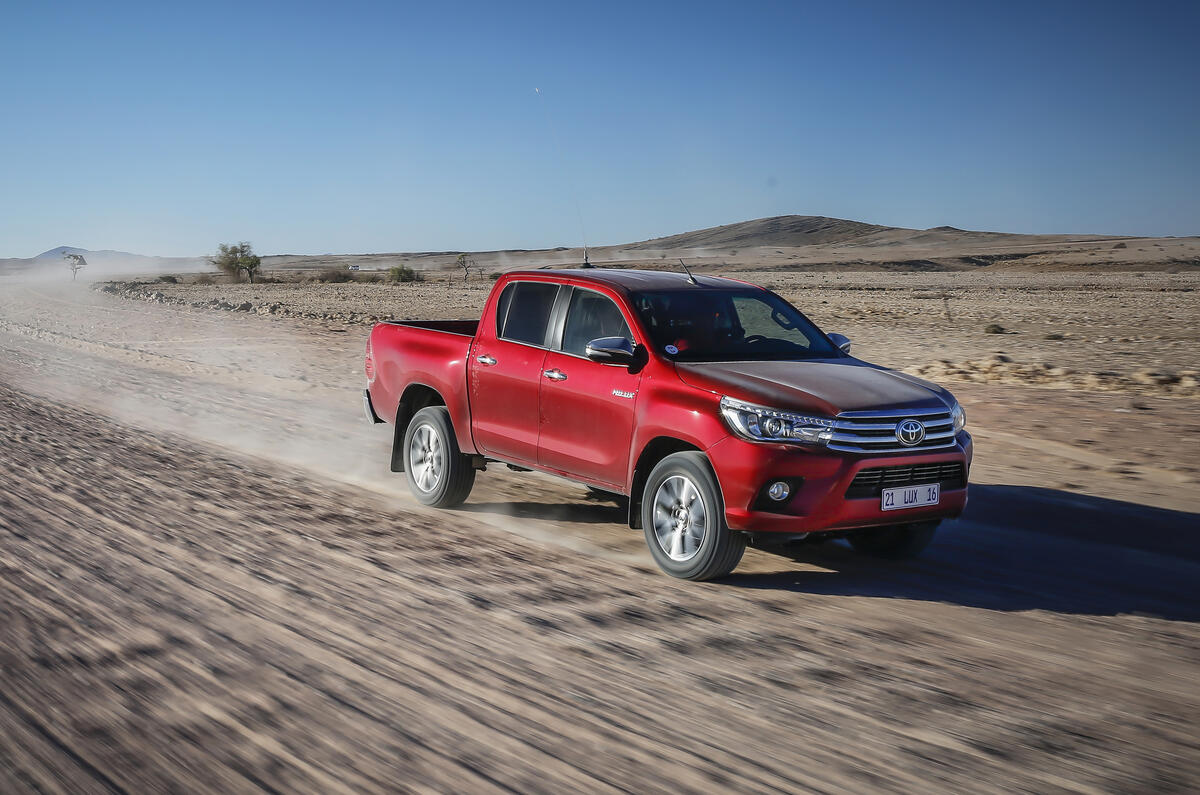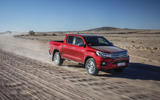What is it?
The Toyota Hilux is nothing short of a motoring icon. Over the past 50 or so years, it has garnered a reputation for being pretty much indestructible, and a true go-anywhere and everywhere vehicle.
Some 18 million versions have found homes across seven generations, and it is Europe’s most popular pick-up truck. And now there is a new version, which is on sale now ahead of the first UK deliveries in July.
There’s plenty of interest here away from the commercial vehicle market, for Toyota is seeking to broaden the appeal of the Hilux with this new model by making it more suited to road use, offering a plusher and higher quality interior, and making the engine more economical. Whisper it, but it could even tempt a few out of their SUVs.
Worry not though; the Hilux has not gone soft. Indeed, Toyota claims it is tougher than ever. At the heart of this toughness is the new ladder chassis, which is claimed to be 20% stiffer than the previous Hilux’s. There are more spot welds in the body, too, to ensure that’s as stiff as it can be and to improve body control and the steering. The suspension has also been overhauled for greater wheel travel, which is said to improve ride comfort and also boost off-road performance.
Powering the Hilux is a new 2.4-litre diesel engine with more torque (295lb ft) and greater economy (from 41.5mpg) than the 3.0-litre unit in the previous Hilux’s range. The 2.4-litre engine is the only choice (the 2.5-litre and 3.0-litre units from before have discontinued) and there’s a choice of a six-speed manual or an automatic gearbox, as well as the ability to switch between two and four-wheel drive depending on the conditions.
What's it like?
It’s the Hilux’s sheer toughness that has always made it famous. Yet, despite the wider brief of the new model, none of that toughness has been lost. In fact, the Hilux feels tougher and more indestructible than ever. Its competitive 1055kg max load and 3200kg braked towing weights are also confirmation that Hilux hasn't gone soft.
Our African test route was about as hardcore as they come, taking in everything from sand dunes, rutted gravel roads, and extended periods in off-road conditions including rocks, ridges, and steep ascents and descents. Predictably, the Hilux conquered all the conditions.
It has a full suite of off-road trickery to help it, including a low-range gearbox, diff locks, and hill descent control. The Hilux is easy to control off-road and is confidence-inspiring; the increased wheel travel allows for greater dips and lopsided pathways to be tackled, and with calm control of the pedals the electronic gizmos can bring out the explorer in you. You also feel yourself rocking around less in the cabin than in, say, a Land Rover Discovery.
That’ll all please the purists, and of course is key to the Hilux’s enduring appeal, but it’s the pick-up's performance away from the mucky stuff that’s of most interest here. It’s good to know that as Toyota has chosen to widen the Hilux's appeal, the vehicle’s core attributes are not lost.
But it’s perhaps the new engine that’s the most commercial vehicle-like in the Hilux. It’s noisy at start-up, and, although generally responsive, particularly in the mid-range thanks to a healthy spread of torque, it lacks the hushed smoothness you find in most large modern diesels. It’s good, but still not as convincing as a traditional SUV alternative despite the improved noise, vibration and harshness levels.











































Join the debate
Add your comment
Toyota Hi lux.
@Einarbb
I want one.